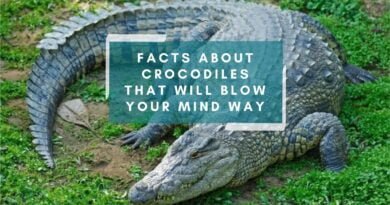Meet the laziest species of the animal kingdom
In the collective imagination, some very slow animals have become the emblem of human qualities and defects, often discordant between them – laziness opposed to tenacity, slowness but also industriousness. The main characteristic that distinguishes some animal species, laziness, has an often underestimated evolutionary reason. Let’s see together which are the slowest animals of the animal kingdom.

1. Bradypus Tridactylus
From its scientific name “Bradypus” refers to its slow feet and “tridactylus”, three claws. Thus, sloths are the slowest animals on the planet.
Scientists discovered that these mammals deposit their feces in a hole they dig in the ground, which they then cover with dry leaves.
They are also diurnal species and have great flexibility and mobility in trees, which enables them to protect themselves from predators. Related to anteaters, their slowness is associated with their survival strategy, as their extreme slowness makes them almost impossible for predators to detect.
The sloth can boast of being the slowest animal in the world, since its average speed is only 0.020 kilometers per hour. The reason for such slowness can be explained by its poorly developed senses: it is short-sighted, has little sense of smell and only one ear.

2. Mojave Tortoises
Inhabitants of the Mojave Desert, these tortoises can spend about nine months of the year sleeping in their burrows. Their travel speed is around 1.2 kilometers per day.
This species can stop drinking water for months at a time, as they store the necessary water in their bladder for all this time. According to the Endangered Species Act (ESA) of the United States, this species is threatened. Among the main causes are its use for domestic purposes, as well as the presence of predators such as coyotes and crows.

3. Salamander Proteus Anguinus
According to research, this group of amphibians can travel a distance of only about 10 meters for several years. Elongated and slender, this salamander has small, slender limbs and is usually found in caves, so it has developed non-visual sensory systems for orientation.
Proteus anguinus is considered a Slovenian national treasure, and they honor the species by placing it on one of their coins. The life expectancy of this species exceeds half a century, they only mate once every 12 years and can go without food for an entire decade. However, Proteus anguinus may be endangered today due to factors such as habitat alteration and loss.
According to studies conducted over several years by scientists in Hungary and the United Kingdom, some specimens can remain completely immobile for more than seven years. Their hunting strategy consists of waiting for food to approach them on its own.

4. Seahorse
The seahorse is one of the slowest animals in the world because its complex body structure only allows it to swim vertically. Despite its small size, it ingests large quantities of food. Its main food sources are plankton, crustaceans or shrimp. It is highly threatened by habitat destruction and trafficking for use in traditional Chinese medicine.
It is a very slow swimmer. It uses the undulating vibrations of the dorsal fin to move and progresses in a characteristic upright position. It also tends to curl its tail towards its belly. Some experts estimate that it takes a seahorse 2.5 days to travel 1 km.
The vertical displacement is achieved by adjusting the volume of air in tiny sacs called “swim bladders”.
Their eyes move independent of each other and by moving their heads, they can keep a perfect watch among the surroundings in which they live.

5. Garden Snail
The garden snail is the slowest mollusk in the world. It is a herbivorous species and feeds on fruits, cereals, tree bark and flowers. Its natural habitat is the Mediterranean region, and it is a nocturnal animal. It is hermaphroditic, so a single snail has both male and female reproductive organs.
Land snails do not have highly developed organs. The lung they use for breathing cannot be compared to those found in mammals or birds. In terms of sensory organs, most of them have two eyes that are located on the antennae on the front of the head. They possess a primitive brain that is divided into four parts and although it cannot be compared to that found in vertebrate animals, it is true that some snails are capable of developing associative learning.

6. Starfish
The starfish reaches a speed of just 0.090 kilometers per hour. There are more than 2,000 types of starfish globally, and they are found everywhere in the oceans. When it moves, it is carried by ocean currents.
A very curious fact about the starfish is that it does not have blood, but a vascular system of water. They have a structure called the madrepore, whose main function is to pump salt water into their feeding tube.
These are some of the slowest moving animals on the planet. There are many more but nothing can beat them in terms of slowness. We would love to know your thoughts.




